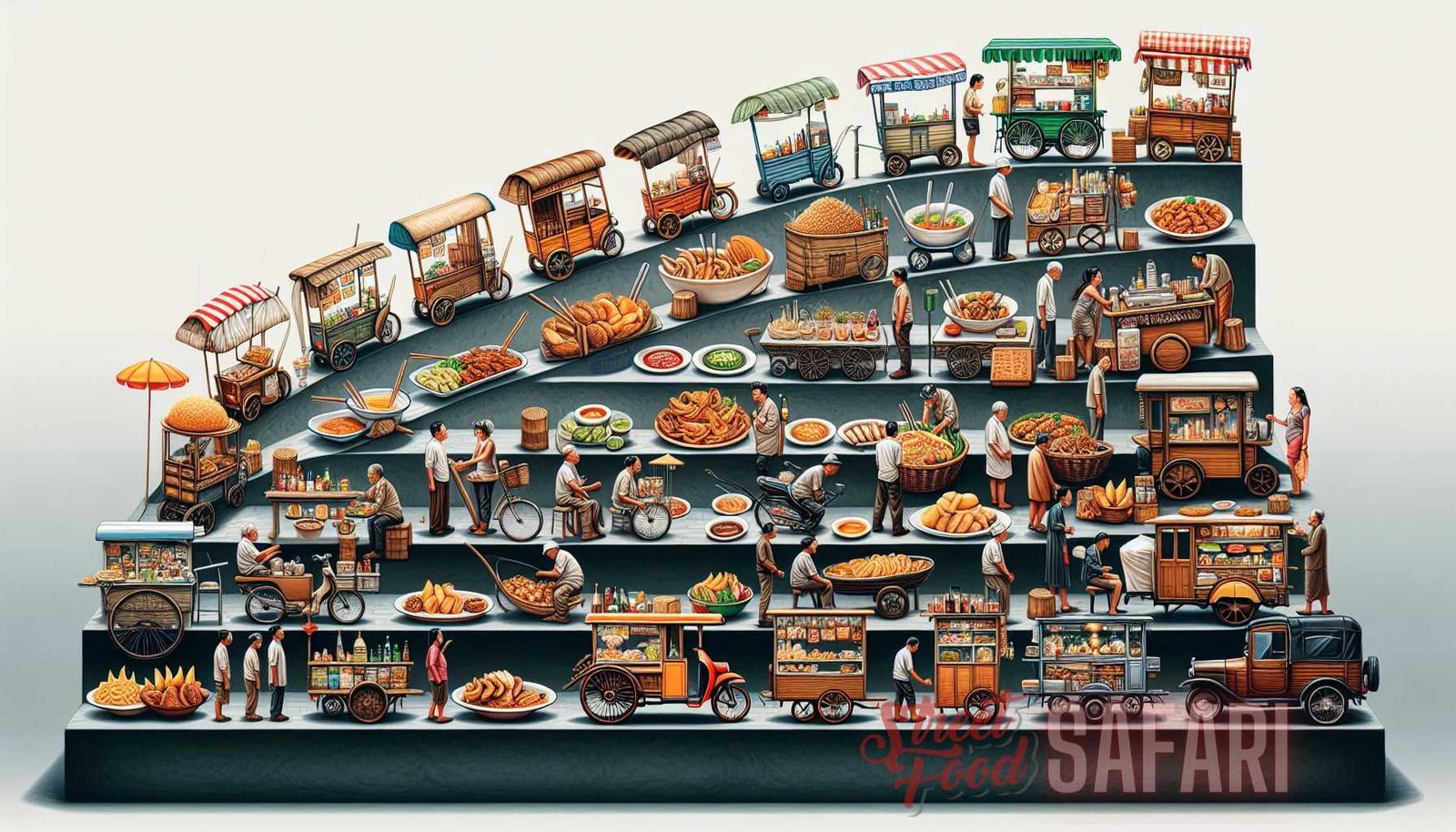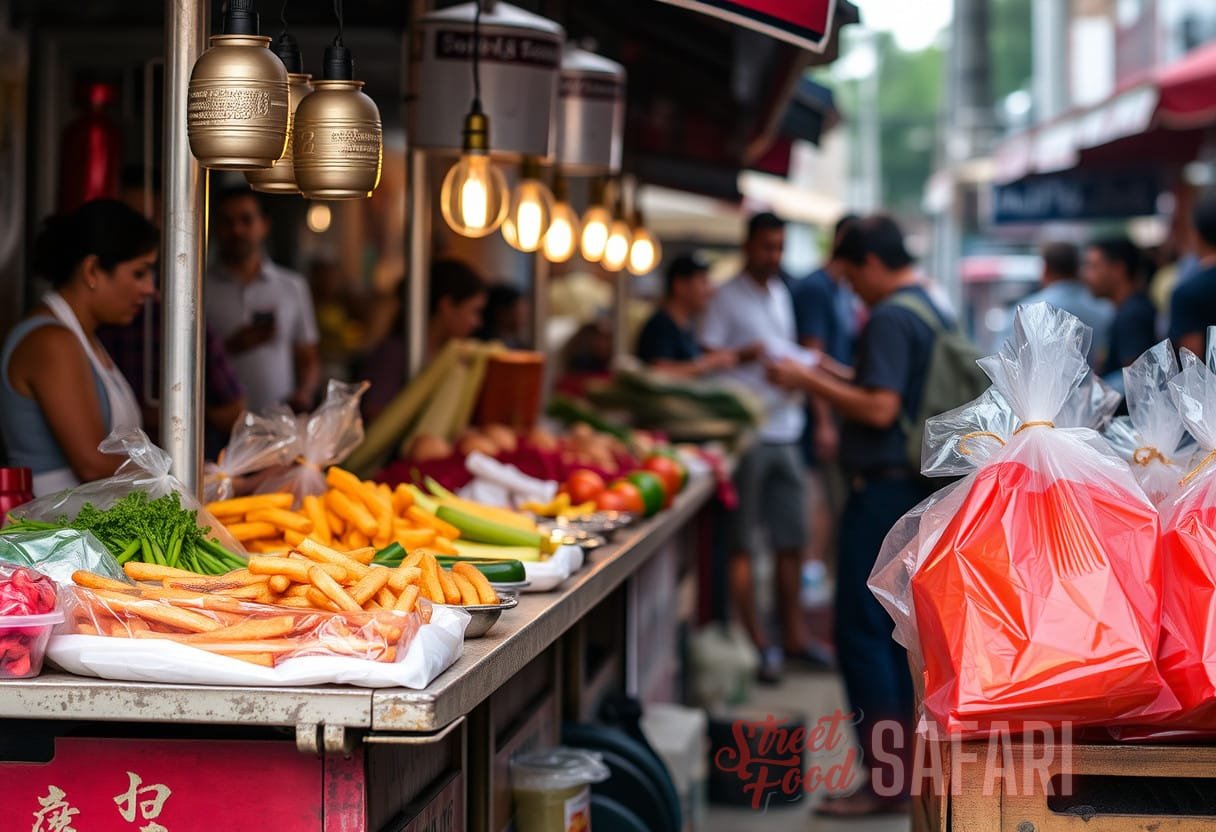Introduction
Street food is a culinary phenomenon that has been around for centuries. It is not only a way for people to grab a quick and affordable bite to eat, but it also represents the diversity and richness of a city’s food culture. Street food has evolved over time, adapting to the changing tastes and preferences of people all around the world. In this article, we will explore the evolutionary journey of street food, from its humble beginnings to its current status as a global gastronomic trend.
The Origins of Street Food
Street food can trace its roots back to ancient times when people would gather in public spaces to buy and sell food. In ancient Rome, for example, there were ‘popinae,’ which were small food stalls that sold snacks and cooked dishes to the general public. In medieval Europe, street vendors known as ‘hawkers’ would travel from village to village, selling their wares to hungry townsfolk.
Fast-forward to the 19th century, and street food became increasingly popular in urban areas as industrialization led to an influx of workers who needed quick and affordable meals. Food carts and stalls started cropping up in cities like New York, London, and Mumbai, serving a variety of dishes to satisfy the hungry masses.
Today, street food is an integral part of urban culture in many parts of the world. From the bustling night markets of Taiwan to the vibrant food trucks of Los Angeles, street food has become synonymous with city living and has evolved to encompass a wide range of flavors and cuisines.
From Small Carts to Gourmet Food Trucks
In recent years, the street food scene has undergone a significant transformation. What was once associated with greasy hot dogs and soggy french fries has now evolved into a gourmet experience. The rise of food trucks has been instrumental in this evolution, bringing high-quality, globally-inspired cuisine to the streets.
Food trucks have become a popular option for aspiring chefs and entrepreneurs looking to showcase their culinary talents without the need for a brick-and-mortar establishment. These mobile kitchens offer a wide variety of dishes, from artisanal burgers and tacos to gourmet ice cream and fusion cuisine.
With the advent of social media and foodie culture, food trucks have gained a loyal following and have become destinations in their own right. They often participate in food festivals and events, attracting crowds of hungry food enthusiasts eager to sample their latest creations.
This evolution in street food has also led to a blurring of boundaries between street food and fine dining. Chefs are now experimenting with different flavors and techniques, creating unique and innovative dishes that rival those found in Michelin-starred restaurants.
For example, the combination of street food and haute cuisine has given rise to the concept of ‘pop-up’ restaurants. These temporary dining experiences often take place in unconventional venues such as warehouses, rooftops, or even abandoned buildings. They allow chefs to showcase their skills in a more casual and accessible setting, while still offering a high-quality dining experience.
Overall, the evolution of street food from small carts to gourmet food trucks and pop-up restaurants reflects the changing culinary landscape and the increasing demand for unique and exciting dining experiences.
The Global Influence of Street Food
Street food is not limited to any one particular cuisine or country, but rather it is a global phenomenon that reflects the unique flavors and culinary traditions of different cultures. Around the world, street food serves as a window into a country’s history, traditions, and local ingredients.
Asian countries like Thailand, Malaysia, and Vietnam are famous for their street food scenes. Night markets in Bangkok are a sensory explosion, with stalls selling everything from pad Thai and mango sticky rice to grilled satay skewers and crispy fried insects. In Malaysia, one can find delicious nasi lemak and char kway teow cooked to perfection on the streets of Penang. Vietnam’s street food is equally diverse and delicious, with favorites such as banh mi and pho readily available.
In South America, countries like Mexico and Argentina are known for their vibrant street food culture. In Mexico City, the taco reigns supreme, with countless stalls serving up an array of fillings and salsas. In Argentina, empanadas and choripán (grilled sausage sandwiches) are popular street food choices, reflecting the country’s love for meat.
Even in Europe, street food has made its mark. In Spain, tapas bars offer a taste of the country’s culinary heritage, with small plates of regional specialties like patatas bravas and jamón ibérico. In Germany, currywurst stands are a common sight, serving up the beloved combination of sausage, curry ketchup, and fries.

The diversity of street food extends to Africa as well. In countries like Morocco, Senegal, and Nigeria, street food is an integral part of daily life. The bustling markets of Marrakech are famous for their tagines and couscous, while in Senegal, grilled fish and thieboudienne (rice and fish stew) are popular street food options.
These are just a few examples of the global influence of street food. It is a testament to the rich culinary traditions and diverse ingredients found in different parts of the world. Street food brings people together, allowing them to experience different flavors and cultures in a casual and accessible way.
The Impact of Street Food on Local Culture
Street food not only satisfies our taste buds but also plays a significant role in shaping local culture and identity. It is a reflection of the history, traditions, and social dynamics of a particular community. Street food can enhance tourism, boost the local economy, and preserve cultural heritage.
Street food vendors often use traditional recipes and cooking techniques that have been passed down through generations. These recipes are a link to the past, preserving the culinary traditions of a community and ensuring that they are not lost to time. Street food can also be a source of pride for locals, as it showcases the unique flavors and ingredients of their region.
Many cities around the world have recognized the cultural and economic value of street food and have taken steps to protect and promote it. For example, Bangkok’s street food scene was recently designated a UNESCO Creative City of Gastronomy, highlighting the city’s commitment to preserving its food culture. In Singapore, the government has implemented a rigorous licensing process for street food vendors to ensure food safety and quality while maintaining the vibrant street food culture.
Street food also has a significant impact on tourism. Travelers are often drawn to destinations known for their street food, as it provides them with an authentic and immersive culinary experience. Food tours and street food safaris have become popular activities for tourists, allowing them to explore local neighborhoods and taste a variety of dishes.
Moreover, street food vendors often form tight-knit communities, creating a sense of camaraderie and belonging. They share tips, trade recipes, and support one another. In some cases, street food has helped marginalized groups, such as immigrants and refugees, establish businesses and gain economic independence.
In conclusion, street food has a profound impact on local culture. It serves as a bridge between the past and the present, connecting people through the universal language of food and preserving culinary traditions for future generations.
Conclusion
The evolution of street food is a testament to its enduring popularity and cultural significance. From its ancient origins to the modern-day food truck revolution, street food has adapted and transformed to meet the changing tastes and preferences of people around the world. It has become a vehicle for showcasing diverse flavors and culinary traditions, bringing people together in the bustling streets of cities everywhere.
As we continue to embrace street food as a global gastronomic trend, it is important to recognize and appreciate its impact on local culture and identity. Street food not only satisfies our hunger but also nourishes our souls, providing us with a glimpse into the rich histories and unique flavors of different cultures.
So whether you’re enjoying a hot bowl of pho on the streets of Hanoi or savoring a gourmet burger from a food truck in New York City, take a moment to appreciate the evolution of street food and the vibrant culinary tapestry it represents.
Internal Links:
For more information on the influence of street cuisine on local culture, check out our article on The Alluring Influence of Street Cuisine on Local Culture: Unfolding the Art.
To explore global street foods and local culinary traditions from around the world, read our article on World Eats: Exploring Global Street Foods and Local Culinary Traditions.
Sources
- “Street Food.” Wikipedia, Wikimedia Foundation, 25 July 2022, en.wikipedia.org/wiki/Street_food.



